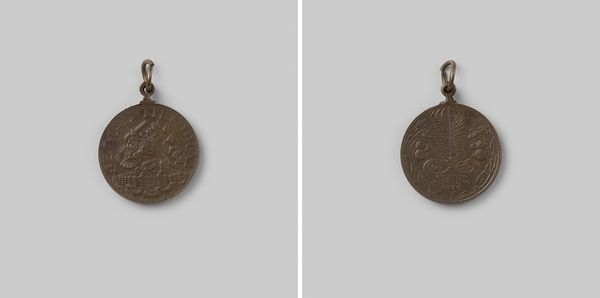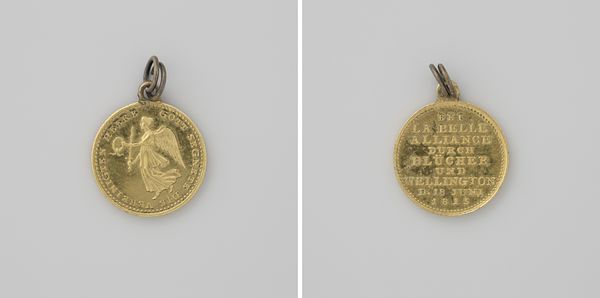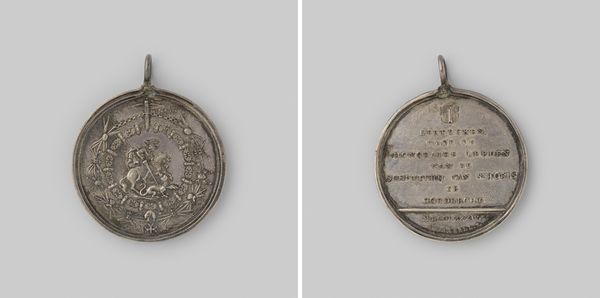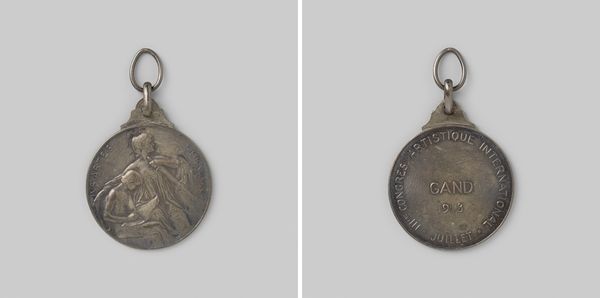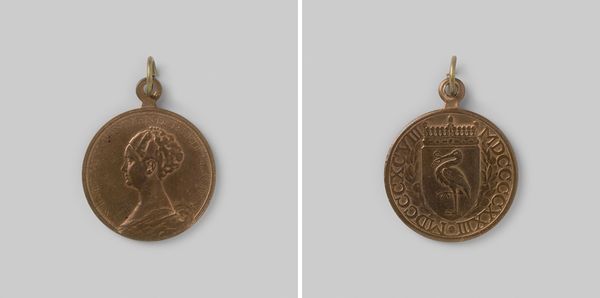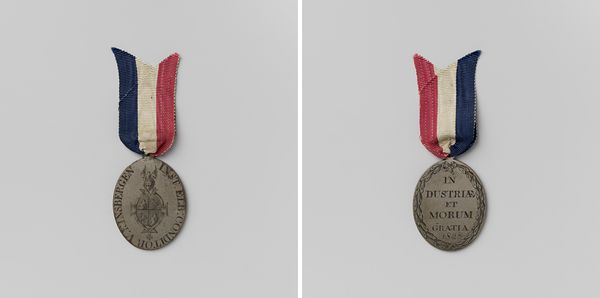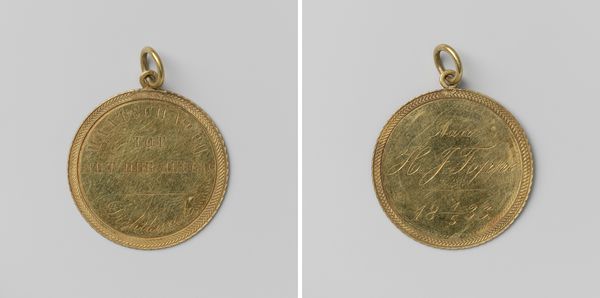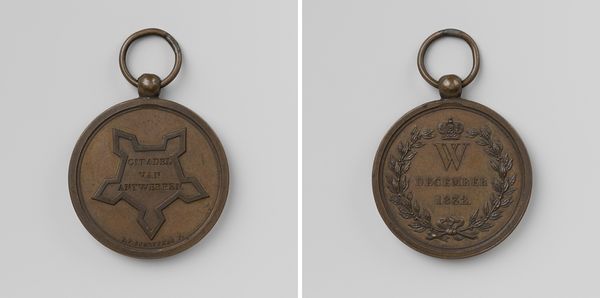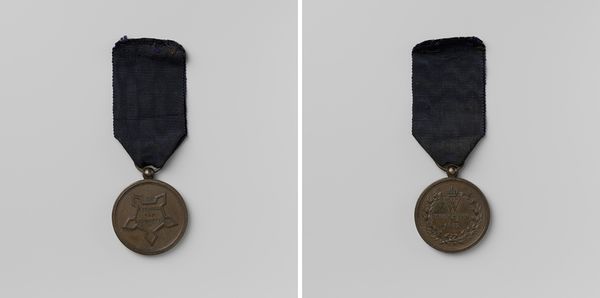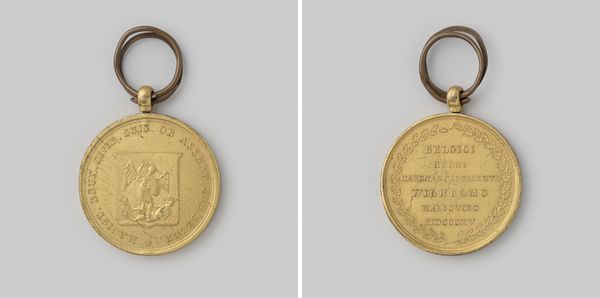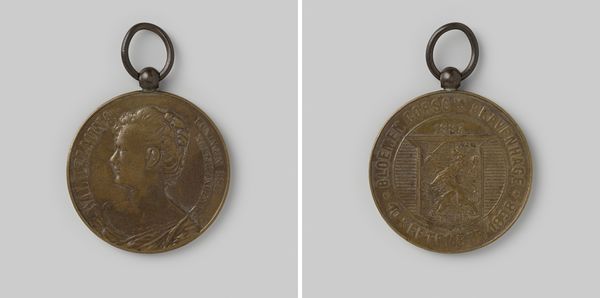
Begrafenis van Paul Kruger, president van de republiek Zuid-Afrika, te Pretoria 1904
0:00
0:00
metal, photography, sculpture
#
portrait
#
still-life-photography
#
metal
#
photography
#
sculpture
#
history-painting
Dimensions: length 5 cm, height 4 cm, height 3.3 cm, diameter 2.8 cm, weight 13.25 gr
Copyright: Rijks Museum: Open Domain
Curator: This photograph captures a poignant memorial: the funeral medal commemorating Paul Kruger, President of the South African Republic, dating back to 1904. Editor: What strikes me immediately is the stillness, almost a quiet solemnity. It's like holding a moment of history in your hands. Curator: Absolutely. Medals like these become potent symbols when considering South Africa's socio-political history and the impact of figures like Kruger within larger anti-colonial movements. Editor: The starkness of the medal against the plain background emphasizes its materiality, it makes you want to run your fingers across its surface, as if feeling the echoes of a lost era. It almost seems mournful, what do you make of the bow? Curator: It does introduce complex readings. In the Victorian era, black bows often symbolized mourning. Here, its inclusion certainly accentuates the piece's funereal theme, subtly reinforcing the commemoration of Kruger's life and political legacy within the frame of bereavement and loss. Editor: Makes one wonder about the power these objects held and continue to possess as triggers of both personal and collective memories. Curator: Precisely. And beyond this emotive quality, there's also the inscription that's hard to decipher. But given it’s related to Paul Kruger’s funeral, it provides insight into colonial era memorial practices and identity formation. Editor: Considering that the work involves silver from the Koninklijke Utrechtsche Fabriek van Zilverwerken van C.J. Begeer, that almost elevates the personal object to high political status. The use of photography, of course, makes the memory accessible to many. Curator: Indeed. Placing this medal in conversation with contemporary understandings of postcolonial identity helps unpack nuanced relationships between remembrance, material culture, and politics, making its historical value more pertinent to contemporary audiences. Editor: I think, in the end, beyond the historical and social narratives, it’s this potential for stirring emotions—almost tangible sorrow and reflective stillness—that makes the work stay with me. Curator: A poignant thought. Perhaps these commemorative objects help bridge individual experiences with macro-historical realities, transforming silent artifacts into compelling agents for dialogues across temporal and experiential spaces.
Comments
No comments
Be the first to comment and join the conversation on the ultimate creative platform.

